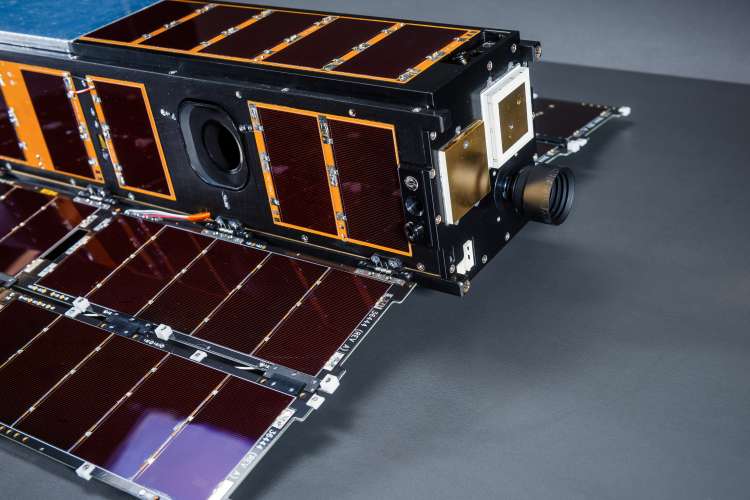Modern technology is increasingly reliant on space-based capabilities that enable essential things like navigation, weather monitoring and communications. With so many signals and radio waves beaming back and forth from ground systems to satellites in space, it is more important than ever to understand Earth’s atmosphere and avoid potential disturbances that could disrupt critical operations.
Scientists at The Aerospace Corporation are leading the way to unlocking this information with the Daily Atmospheric Ionospheric Limb Imager (DAILI), which will study molecular oxygen density of Earth’s upper atmosphere.

“The ultimate goal is to really understand the processes that affect the upper atmosphere and ionosphere,” said Dr. James Hecht, Senior Scientist at Ionospheric & Atmospheric Sciences at Aerospace.
DAILI is an instrumented six-unit (10x10x60 cm) CubeSat that images the limb of the Earth at approximately 3 km vertical resolution from 140 to 290 km in two colors. These two colors allow information to be obtained about the neutral atmosphere during the day and the ionosphere at night.
The DAILI data though will primarily be used to study the neutral atmosphere at an altitude range of about 140 to 200 km, a region where measurements are scarce, and density and composition are highly variable. The variability of molecular oxygen in this altitude regime is particularly difficult to measure.
“We should be able to see how the dynamics change in this portion of the atmosphere, which is something not very well known right now,” said Hecht.
There are several aspects of DAILI that contribute to its ability to study neutral atmosphere variability. DAILI’s forward three-unit long sunshade reduces intense scattered light from the Sun, the Earth’s surface, and low-altitude clouds by a factor of almost a trillion. DAILI’s sunshield is perhaps the most sophisticated ever flown on a CubeSat, Hecht said. The sunshade is key to DAILI’s ability to examine the upper atmosphere’s dynamic variations during daytime. This gives DAILI the ability to track these variations continuously unlike other techniques currently being used.
The results of the DAILI mission should provide much needed data to inform atmospheric models, which currently demonstrate a limited understanding in this area. These improved models can help scientists to more precisely understand the propagation of radio signals and calculate precise orbits of satellites.
“There has also been considerable scientific interest in understanding the dynamics of that region,” said Hecht. “The DAILI data should be able to help there.”
DAILI’s sensing technique was validated aboard the ISS by previous measurements made by Aerospace’s photometer portion of the Remote Atmosphere/Ionosphere Detection Sensor (RAIDS), a large suite of instruments developed jointly by Aerospace and the Naval Research Laboratory (NRL). RAIDS was responsible for collecting data on the composition, temperature and structure of the upper atmosphere and ionosphere between 85 and 200 kilometers. The knowledge learned from RAIDS was the foundation for the DAILI CubeSat mission.

DAILI launched on Dec. 21 aboard Space X’s Falcon 9. With a successful launch, DAILI will now spend time aboard the International Space Station (ISS) before being released in January from the ISS, and then operated by Aerospace during its one-year mission. Data from DAILI will be analyzed in a collaborative effort by Aerospace, ASTRA LLC, Dixie State University, Johns Hopkins Applied Physics Laboratory, and the National Center for Atmospheric Research.
In addition, the DAILI mission complements two other NASA satellite missions, GOLD and ICON, respectively launched in 2018 and 2019, that aim to help expand knowledge about Earth’s upper atmosphere and ionosphere.
Precision is critical for satellites to operate effectively. Expanding the available data and understanding of how the Earth’s atmosphere could impact space-based capabilities is a significant component of advancing resiliency and adaptability for the space enterprise.








